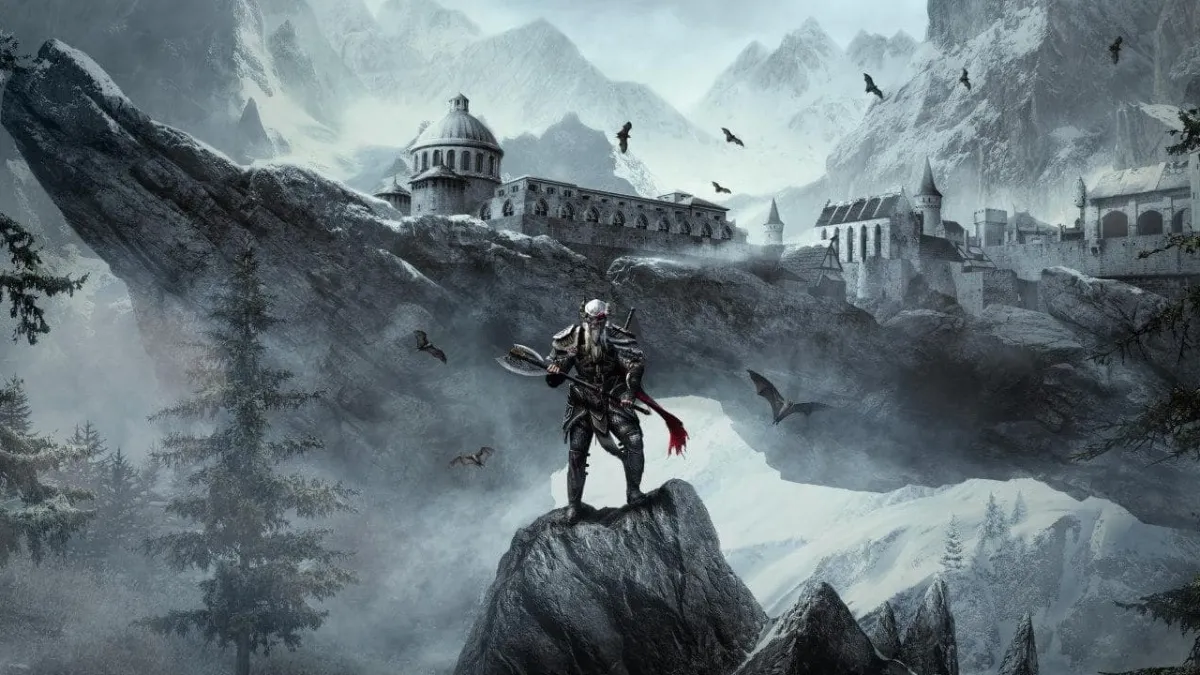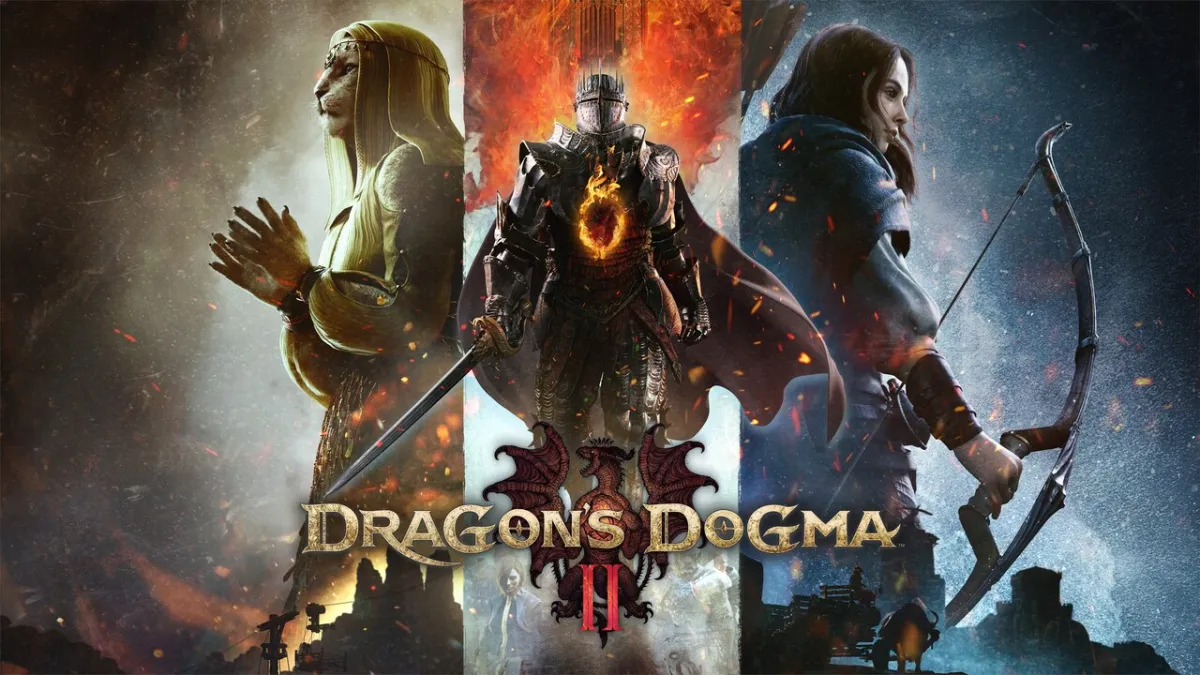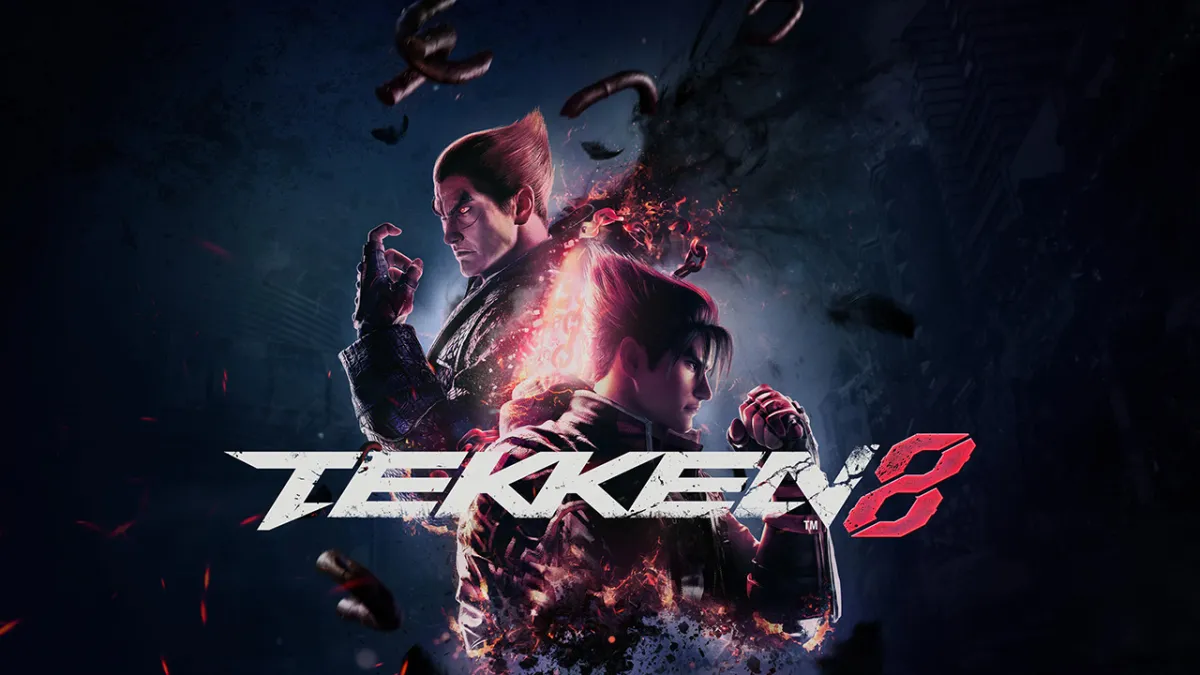The Elder Scrolls Online has flourished since its One Tamriel update, but it could never quite escape from Skyrim’s ever-looming shadow. As the last mainline entry in the long-running franchise, Skyrim remains a cornerstone in modern game design. With fans ravenous for The Elder Scrolls VI, The Elder Scrolls Online has had to carry the heavy burden of sating fan expectations for some time now.
The Elder Scrolls Online: Greymoor is a love-letter to those fans in some ways, and a typical The Elder Scrolls Online expansion in many others. While the two new zones of Western Skyrim and Blackreach are perhaps some of the best among those added since Morrowind, the format hasn’t changed in as many years. Fans coming into Greymoor know what to expect, and what’s on offer is all rather good, but new fans entering ESO for the first time expecting Skyrim 2.0 will need to check their expectations at the door.
The Elder Scrolls Online: Greymoor returns to Skyrim . . . again.
While most of the advertising around The Elder Scrolls Online: Greymoor has focused on our return to Skyrim to defeat an insidious vampiric foe, Western Skyrim isn’t the only zone set within this country of Nords, giants, and frosted mountaintops. Eastmarch and The Rift have been in ESO since launch, featuring Windhelm and Riften respectively. Despite all the hullabaloo, Greymoor isn’t technically a return to Skyrim, but that hasn’t stopped those excited to once again cross the frozen wastes.
With the inclusion of Western Skyrim ESO still doesn’t feature the entire country, which existing fans will be fine with. New fans need to make peace with this if they were expecting to see all their favorite locations, and planned to seamlessly explore the entire region. This isn’t a knock against what Greymoor is; this is me setting expectations here at the start. If you saw all the ads and stopped there, you should probably know what you are getting into. I want to get this disclaimer out of the way, because Western Skyrim – small as it may be – is perhaps the best new zone added to The Elder Scrolls Online since Morrowind.
Summerset and Elsweyr were fine maps, full of color and detail. While Summerset hewed a touch too closely to traditional fantasy tropes it remained a gorgeous island to traipse about, and the main narrative was perhaps the best in the entire game. Elsweyr was a pleasant change of pace visually, with its Middle Eastern and South Asian influences, but the main story didn’t quite reach the same heights as Summerset’s (though the side-stories were all uniformly excellent). Much like those two zones Western Skyrim and Blackreach both are visual splendors, despite the aging engine and host of low-resolution textures that still dot the game.
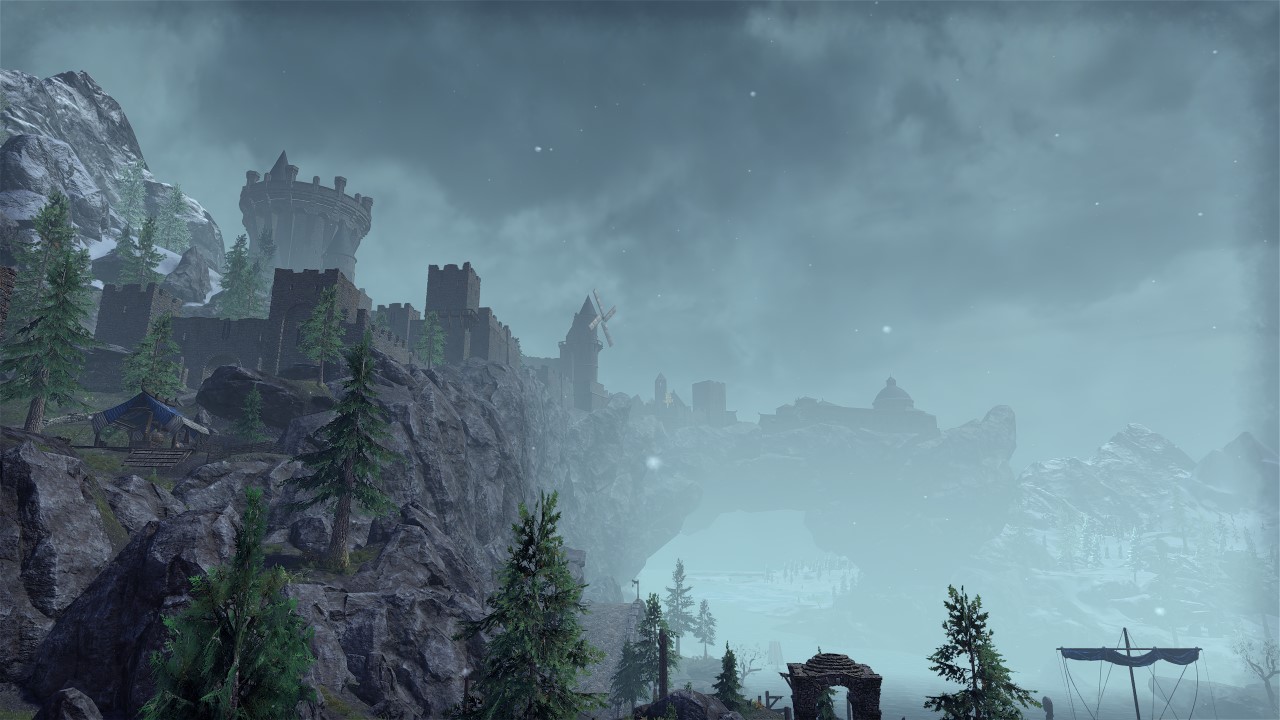
Western Skyrim is exactly what you expected: snow-capped peaks, frozen northern wastes, and rolling southern hills. It’s as gorgeous in The Elder Scrolls Online as it was in Skyrim, though the more stylized approach taken in ESO may turn away a few purists. Blackreach is the visual star of the show, with it’s massive caverns pocked with violet geodes, pulsing orange fungi, and monstrous stalagmites and stalactites. The Elder Scrolls Online has always had an impressive lighting system, and its put to good use in both zones. Even the textures appear sharper, though that hasn’t stopped Zenimax from using muddier ones to paper over the less noticeable objects and terrain.
Visuals aside, there is something about the design of both Summerset and Elsweyr that places them a tier below Western Skyrim: their more circular design. Much of the content was set along a loop, and the center of each zone was either largely barren, or impassible. While there was plenty to explore within each Chapter, this design choice made each feel less open and more focused on a strict path. You could certainly point your nose in any direction and stumble upon an adventure, but they were missing that Elder Scrolls magic – that sensation of wonder that comes from the unknown. This complaint could be levied at The Elder Scrolls Online as a whole, with it’s clearly telegraphed quest-hubs and special locations, but the original zones did a better job at spreading those points of interest across the entire breadth of the map.
Morrowind is a giant circle, but that had less to do with The Elder Scrolls Online and more to do with the original design of the zone all the way back in 2002. It may not have had every little nook and cranny in The Elder Scrolls Online as it did back then, but it felt authentic to the original experience, a trait Summerset and Elsweyr lacked by virtue of being new locations within the franchise. They were fine zones, but they felt more restricted with little mystery to them once you figured out the flow of each map.
Western Skyrim is closer to Morrowind than those two in this regard. It’s an existing map that’s been transplanted from its standalone game into The Elder Scrolls Online. Like Morrowind it’s doesn’t have every single cave, tower, or curiosity. Hell, in a way it too dots important locations and all side-quests along a circular loop, but it’s open. Truly, magnificently open.
This has more to do with the source material than anything: in Skyrim you could climb nearly every mountain, cross every valley, and go wherever you damn well pleased. It didn’t suffer from the design constraints of an MMO, which has to make sure everything is as accessible and easy to locate as possible. In Skyrim I could frolick across the countryside, stumble on some ne’re-do-wells, murder them, then plunder the tower they were camping outside of before gallivanting off into whatever random direction fit my fancy.

Western Skyrim may not replicate that experience, but it captures that mood. Yes, everything of note is clearly marked and labeled in the zone guide (though you still need to get near a location to permanently add it to your map). There are very few unlabeled locations for adventures to stumble upon, though they tend to have something worthwhile tucked away (like other expansions there is a museum quest-line tailor built for the wanderers in the audience). What Western Skyrim does have is truly open traversal.
It’s hard to put into words how transformative that little aspect alone is, but it’d made my time in Greymoor more enjoyable than it should have been. For all intents and purposes the zone design in The Elder Scrolls Online: Greymoor is the same exact template we’ve seen since 2017, and Blackreach, the second zone added in this Chapter, follows it to the letter. In many ways so does Western Skyrim, but because the original area didn’t possess any impassible geography, neither does The Elder Scrolls Online interpretation.
Granted, I can’t haul ass up every crag with my horse, much like I did in Skyrim proper, so Zenimax Online Studios instead laced every mountain range with a bevy of paths and trails that allow myself and others to traverse without restraint. The icy moors to the east of Solitude that lead to Morthal dominate the upper half of the zone, meaning the center isn’t blocked off or as lifeless. These two things come together to make Western Skyrim feel like the first truly open Chapter to have been added to The Elder Scrolls Online, and helps obfuscate the same rote pattern we’ve been stuck in for years.
Because, despite the wonderful sense of freedom, the basic design of Greymoor isn’t anything we haven’t seen before. This isn’t inherently a bad thing: if it ain’t broke don’t fix it. Ever since One Tamriel, The Elder Scrolls Online has maintained an easy balance between free-form exploration, and theme-park handholding. You’ve been able to bounce around zones at your leisure, but the game has always kept one hand on the wheel to ensure players didn’t miss the important stuff. This hasn’t changed in Greymoor.
Points-of-Interest still have lengthy side-quests attached to them (though Greymoor does add a few that are simply there for the explorers, such as the Giant Camps), and the main story will take you around the map into the path of nearly every quest within the zone. Delves still have a quest, skyshard, and boss to tackle. The new Harrowstorm public events are Dark Anchors with a twist yet again; point being nothing in Greymoor breaks out of the mold that’s been established, and that’s A-Okay. It’ll likely just annoy those crossing over due to all the Skyrim-oriented advertising.
It’s still a fine loop though: there’s something relaxing about falling into its cadence and knocking out all the quests one-by-one. Perhaps I’m just a checklist fanatic, but returning to The Elder Scrolls Online: Greymoor felt like slipping on an old, well worn pair of boots. They’re familiar and little worse for wear, but fuck are they comfortable. Throw in the more open-ended feeling Western Skyrim brings to the equation and it’s like you’ve added new laces: it’s just enough to freshen things up.

And, by and large, the content on offer is all pretty good. The side-stories remain some of the best tales in The Elder Scrolls Online, varying from saving a returning narcissistic Dark Elf who managed to turn themselves into a bottle, to assisting Tamriel’s most greatest ambassador Rigurt make the peace among Nord jarls. While most are still attached to a specific Point-of-Interest, there are a few more tucked away in the wild than I recall finding in either Summerset or Elsweyr. It’s a welcome change of pace, even if doesn’t deviate all that much. There are plenty of familiar locations for fans of Skyrim to visit as well, such as the Dragon Bridge and Labyrinthian, that further help Western Skyrim feel more memorable than the previous two Chapters.
The main narrative is perhaps the weakest tale to be told in Greymoor. It isn’t bad, and features some genuinely sharp writing and dialogue, but it suffers from two flaws (the glaringly obvious plot twist you can spot at the start aside). First, it can’t help but feel like a precursor to something larger, a prologue of sorts. Elsweyr suffered from this same issue, thanks in part to Zenimax’s commitment to telling a year-long yarn, and it’s made the transition to Greymoor as well. By the story’s conclusion it felt like very little had actually happened. The true climax will come into play six months from now when the story DLC zone is added (which, unless there is some sort of twist I am missing, will add another portion of Skyrim to The Elder Scrolls Online), which deflates the overall impact this tale was striving to reach.
Second, Zenimax’s commitment to making every Chapter work as a standalone story makes it hard for veteran players to feel invested. We know Lyris Titanborn: if you’ve completed the base game’s Coldharbour arc the two of you are pals. But, in Greymoor, she treats you with a wary caution, like she has no idea if you’re worth working with. It makes sense as a new player, because Lyris has no clue who the Oblivion you are. But, as a returning player, you get one throwaway line before being treated no better than some random fool who stumbled in off the street. It’s a dissonance that’s hard to shake, especially after how well the side-quests in Greymoor integrated previous interactions and relationships.
It’s odd to witness while bouncing about both Western Skyrim and Blackreach. In one moment you have old friends catching up with you, and in the next no one knows who you are. This has been an issue since the Morrowind Chapter, but it feels exacerbated in Greymoor. The side-quests are lush with dialogue designed to recognize returning players, but the main quest featuring vampires and werewolves never once brings your own transformation into the conversation if you so happen to be a bloodsucker or aggressive furry. This divide makes the problem stand out more than ever, and it’s a bit of a downer.
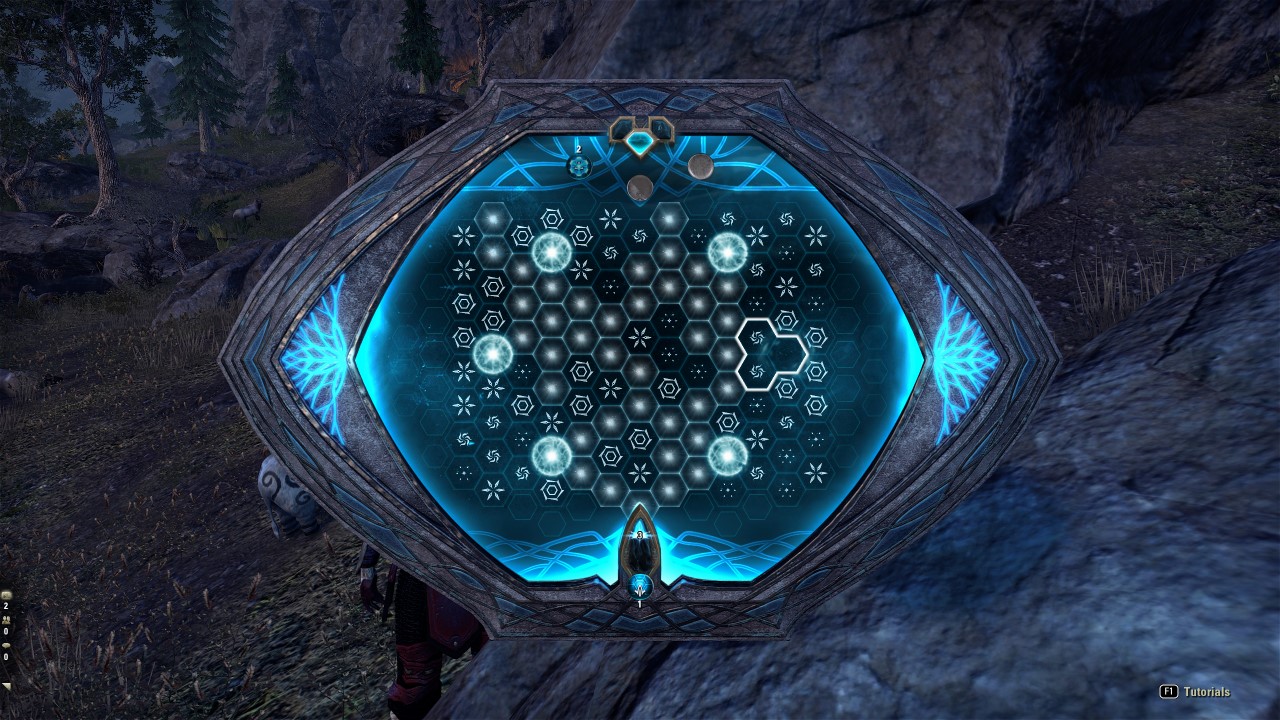
Eat your heart out, Narsis Dren.
With The Elder Scrolls Online Greymoor comes a new side activity for players to dig into: Antiquities. Players need to own Greymoor to unlock this feature (much like the Psjic portals in Summerset), but thus far it’s proven itself a fun, if grindy, diversion from saving the world for the umpteenth time.
Players will unlock two skill line – Scrying and Excavation – and are tasked with unearthing buried relics scattered across Tamriel. This can range from loot you can sell, to new motifs, furniture, and even a mount. The system is simple enough, and allows the more lore-inclined side of the community a chance to literally dig up more information about Tamriel and the various cultures that populate it. You’ll first need a Lead to kick things off, and these are scattered all over Tamriel, incentivizing exploration.
Once you have a Lead you’ll need to Scry it to ascertain its location. Scrying is a match-all style mini-game that requires players to connect a central point to six glowing nodes on the device by selecting groups of adjescent identical icons with a limited number of turns. As you advance the skill line you’ll unlock additional abilities that make the task easier, such as transforming a hexagon of nodes into one single icon. This is crucial, because the more glowing nodes you fail to reach the more possible dig site will appear on your map.
Once you have figured out which dig site is the correct one it’s time to excavate your treasure. You’ll first need to head to the highlighted location on the map, then use the new Antiquarian’s Eye to point you towards your excavation mound. Once you find the glittery gold pile of dirt you’ll enter a second mini-game, this time peeling dirt away one square at a time within a 10×10 grid. The goal is to find your loot before running out of “time” (a resource and not actual time), and you can use the Antiquarian’s Eye as an “Augur” without wasting valuable minutes digging about fruitlessly.
This Augur action has limited charges however, so you need to use the colors left behind in a sort of Hot-and-Cold fashion to locate the loot. From there you use one of three tools (two earned from leveling the skill line) to retrieve the artifact you’re after, but you need to be careful, lest you destroy the treasure with a foolish mistake.
As a whole both mini-games add up to a relaxing, lore-heavy side activity that promotes exploration in a way the more directed Point-of-Interest and standard quest design doesn’t. Leveling the skill lines is a bit of a grind, but those looking to sit back and hopscotch across Tamriel will find much to love. It’s a solid addition to the game, even if it doesn’t cater entirely towards the endgame crowd (the Mythic items aside).

Performance more temperamental than a horker in heat.
What haven’t panned out as well as planned have been the “performance adjustments” made to The Elder Scrolls Online: Greymoor. In theory, performance should be improved now that more tasks have been moved away from a single-core to multiple cores, but performance was all over the map. A couple of good things have come from these adjustments that bear mentioning. The new TAA anti-aliasing has removed many of the jaggier edges and “shimmering” the older FXAA method failed to smother, and in a way it makes the game look more “Elder Scrolls-y”(though it does soften up the image some).
Additionally, the performance adjustments have raised my average minimum frame-rate, which is always a plus. Frame-rates in The Elder Scrolls Online have always suffered from wild fluctuations, especially when other players start to fill the scene, so it was a relief to see I could keep at least 60 frames-per-second in player-heavy environments like Solitude.
What’s not so great are the more frequent swings in performance. Like I said, frame-rates in The Elder Scrolls Online already had a habit of oscillating between extremes, and this update seems to have exacerbated the issue. In environments where I once held a stable 100 frame-per-second (the game’s frame-rate cap) I now swing dramatically between 60 and 100 FPS as if on a whim. I’ll be gazing out across the wide valley of Western Skyrim dotted with other players at 100 frames-per-second, only to drop to 60 when I turn around and look directly at a rock. It’s weird, because areas where performance should be taking a hit it soldiers on, yet it seizes up like an ancient automaton during low-stress scenes. And Blackreach, well . . . Blackreach just runs like ass.
I’m running a 1080 Ti and i7-8700K for reference, and while ESO has always been harder on the CPU than the GPU that chip should be more than enough. I can make peace with the performance in some ways at least: I can cap my frame-rate to 60 FPS and be fine, but it’s still annoying. Something I can’t control on my end, however, is the atrocious server lag that plagued Greymoor at launch, and remains a milder issue today.
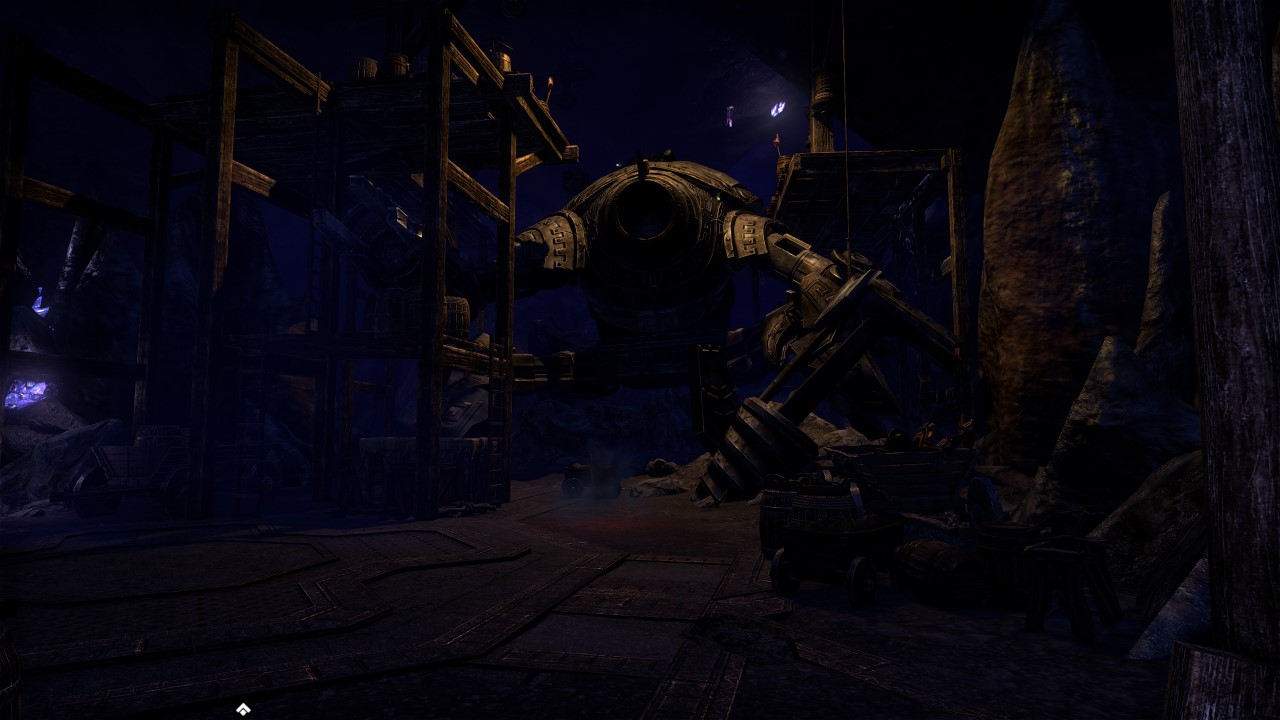
Let me say this: as far as launches go Greymoor has not been a dumpster fire. Has it been smooth? No, not at all. The game was swiftly taken down for hours long maintenance shortly after the Chapter went live due to players who didn’t own Greymoor being able to access the new content. Once the game came back online players had to deal with lengthy queues, and some even lost access to Greymoor despite owning the Chapter.
Once the queues leveled out severe lag reared its ugly head. Ping would routinely peak above 300 ms for most players, myself included (I have excellent gigabit internet, for reference), and trying to commit any action was met with either outright refusal from the server, or a crippling delay that made accomplishing anything impossible. Average players had to contend with the input delay Cyrodiil players have been dealing with since the Harrowstorm DLC launched in February, and it was not fun.
Holistically these issues are far from ideal, but compared to other MMO launches Greymoor’s debut hasn’t been all that bad. Not good, certainly, but I have seen far, far worse. I was there when Wrath of the Lich King died every thirty minutes, thwarting my attempts to clear Naxxramas. I stood in line in The Fringes waiting on Raubahn’s Wall to topple. I sat twelve hours in queue to try and play WoW: Classic. I’ve seen dumpster fires, and Greymoor’s launch wasn’t one.
Your kitchen garbage can on fire? Yeah, sure, but this hasn’t been a complete disaster (Phantasy Star Online 2 takes that medal if we are to compare launches last week). Unfortunately, we’ll need to wait a couple of months for the next “performance” patch to see if it corrects any of the issues introduced with Greymoor.
That, and Cryodiil – the massive PvP zone that was once a cornerstone of the game – continues to suffer. Hell, even Trials are suffering. Anything with 12 or more players is prone to de-sync errors, unplayable input lag, and other issues. With The Elder Scrolls Online: Greymoor it often feels like Zenimax prioritized the new player experience over the MMO side of the house, and it shows whenever you try and engage with the endgame. It’s taken an arrow to the knee, and until these issues are addressed I fear veteran players will fall away from the game.
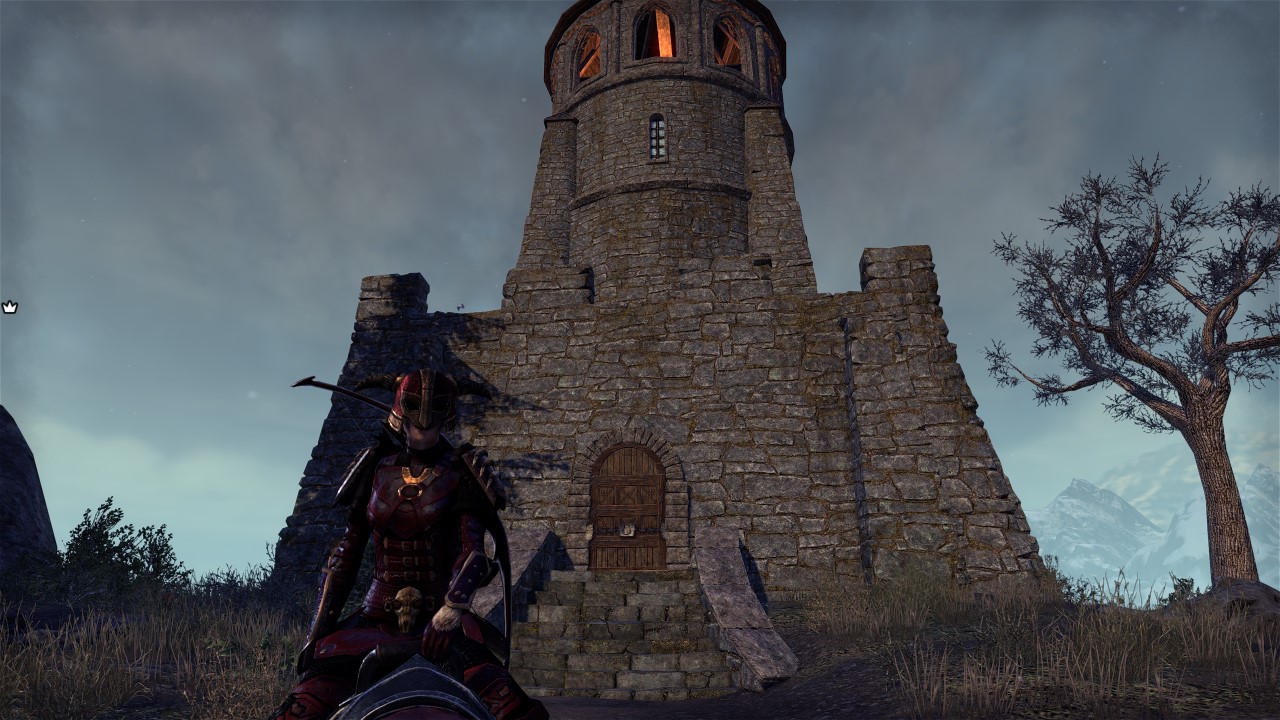
The Verdict.
Greymoor doesn’t do anything dramatically different. The formula that was established in the Morrowind Chapter remains intact here, yet the more open world-design in Western Skyrim alone makes it one of the best zones added to the game. Blackreach is a visual treat, and welcome addition to spice things up, even if performance in the depths is far from ideal. The addition of Antiquities helps round out the experience, providing plenty of incentive for players to slow down and explore the wide, varied world outside Skyrim.
The Elder Scrolls Online: Greymoor is a solid new Chapter in the Elder Scrolls saga, despite hewing too closely to tradition at times. It’s an excellent time for new players to jump into the game, but long-standing performance issues continue to hamper the endgame for veterans. The main story may be a bit of a bust, but the variety of excellent side-stories on offer proves The Elder Scrolls Online is one of the best story-oriented MMOs on the market.


